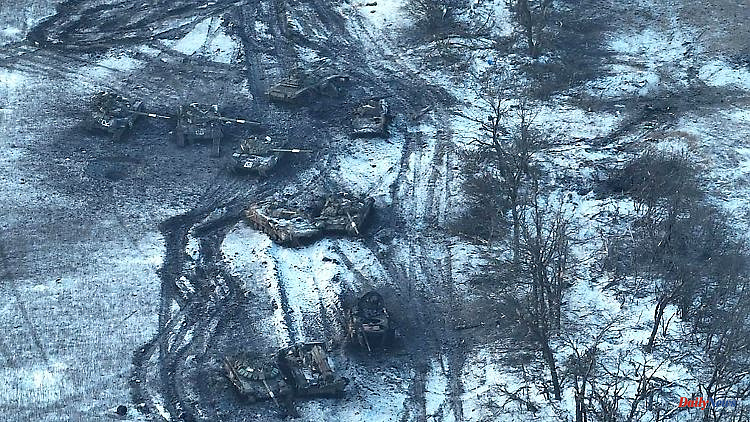Russian troops try to break through the front near Wuhledar with ever new waves of attacks. But all attacks fail. A Ukrainian commander told the New York Times how Moscow's troops in the region were failing.
According to their own statements, Ukrainian units destroyed at least 130 tanks and armored personnel carriers in a three-week battle for the eastern Ukrainian mining town of Wuhledar. This is reported by the New York Times (NYT). Accordingly, Ukrainian military speak of the largest tank battle of the war.
While Russian tactics, as at the beginning of the war, were based on advances with tank columns without flank protection, the Ukrainians relied on ambush attacks, the US newspaper writes. "We studied the roads they were using, hid and waited," a Ukrainian non-commissioned officer told the paper.
According to Vladislav Bayak, deputy commander of a battalion of the 72nd Mechanized Brigade, the Ukrainians had carefully prepared the terrain in anticipation of a Russian attack. Accordingly, anti-tank teams hid in rows of trees along the fields, while artillery pieces took up positions further back. According to the statements, Ukraine left the unpaved road towards Wuhledar mine-free, while the surrounding fields were littered with booby-traps. The idea behind it: The Russians should be enticed to advance and at the same time prevented from fleeing quickly when fighting starts.
According to Bajak, tank columns are most at risk when battle begins and drivers are panicking and trying to turn back. Because then they would drive onto the mined shoulders of the road. The tanks knocked out by the mines would act like obstacles, slowing down the column or even stopping it completely. Only at that moment did the Ukrainian artillery receive the order to fire, destroying more tanks and killing crews who climbed out of the vehicles.
For lack of alternatives, the Russian commanders sent new waves of tanks forward for days, which were then shot up by the Ukrainians, the NYT continues. In one instance, the Ukrainian defenders are said to have even requested a HIMARS missile attack to destroy a Russian column. The US-made rocket launchers are normally used against stationary targets such as ammunition depots or barracks, but are said to have proven effective against the column as well. According to the NYT, because of the high level of material losses, Moscow has meanwhile switched to attacking only with infantry squads.
The extent of the Russian defeat at Wuhledar was already causing resentment within Russia. As reported by the analysts of the American Institute for War Studies (ISW), among others, military bloggers close to the Kremlin are publicly calling for the commanders responsible for the costly offensive to be punished. The storming of Wuhledar is being led by the same figures who have "destroyed significant amounts of personnel and equipment" in the past without having to answer for it, according to Telegram, among others.












